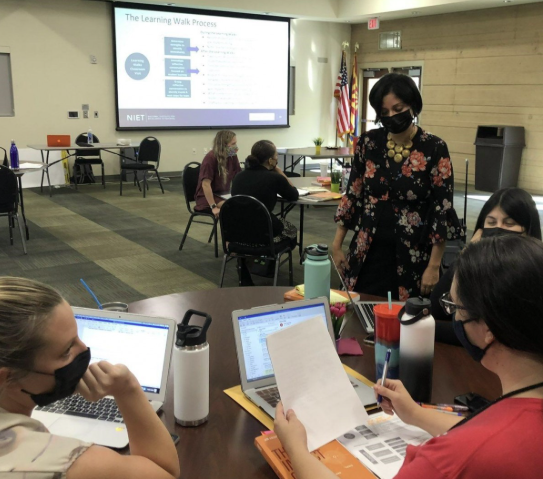Instructional leadership is a cornerstone of effective school improvement. It focuses on enhancing teaching and learning by ensuring that educators have the vision, tools, and support to help every student succeed. Building instructional leadership capacity means developing the skills and structures within a school to lead for learning—not just from the principal’s office, but across the entire staff.
1. Defining Instructional Leadership
Instructional leadership is about more than evaluating teachers or setting schedules. It involves actively guiding teaching practices, aligning instruction with learning goals, and fostering a culture of continuous improvement.
Core responsibilities include:
- Setting high expectations for teaching and learning
- Observing and coaching teachers regularly
- Facilitating data-informed decision-making
- Supporting curriculum planning and implementation
2. Distributing Leadership Roles
Building capacity requires shared responsibility. By empowering teacher leaders, schools can distribute instructional leadership across departments and grade levels.
Ways to distribute leadership:
- Create instructional leadership teams to guide initiatives
- Designate department chairs or instructional coaches
- Offer peer observation and feedback systems
- Provide leadership training and mentoring for aspiring leaders
3. Prioritizing Professional Learning
Ongoing professional development is key to strengthening instructional practice. Leaders should promote a learning culture where teachers are encouraged to refine their skills, reflect on their practice, and learn from one another.
Strategies for professional growth:
- Embed coaching and peer collaboration into the school schedule
- Organize lesson study groups and PLCs (Professional Learning Communities)
- Align training with classroom needs and student outcomes
4. Using Data to Drive Instructional Decisions
Effective instructional leaders use data to understand what’s working and what needs adjustment. This includes academic performance, engagement levels, and student feedback.
How to use data well:
- Schedule regular data meetings to review trends and set goals
- Help teachers interpret and act on assessment results
- Track instructional strategies and student progress over time
5. Building a Culture of Collaboration and Trust
Instructional leadership thrives in a culture of trust and collaboration. Teachers are more likely to engage in professional growth when they feel safe, supported, and valued.
Ways to build trust:
- Recognize efforts and celebrate progress
- Invite input and honor teacher voice in instructional planning
- Offer constructive feedback and resources—not just evaluation
6. Aligning Systems and Resources
Leadership capacity grows when time, tools, and resources align with instructional goals. Leaders must ensure that initiatives are supported by effective systems.
Alignment practices:
- Use the school improvement plan as a living document
- Schedule time for collaboration and instructional planning
- Allocate resources to support innovation and evidence-based practices
Conclusion
Building instructional leadership capacity is not a one-time initiative—it is an ongoing commitment to improving teaching and learning at every level. When schools invest in leadership development, empower educators, and focus on instructional excellence, they create environments where all students and teachers can thrive. Effective instructional leadership transforms schools into dynamic learning communities with shared responsibility for student success.














